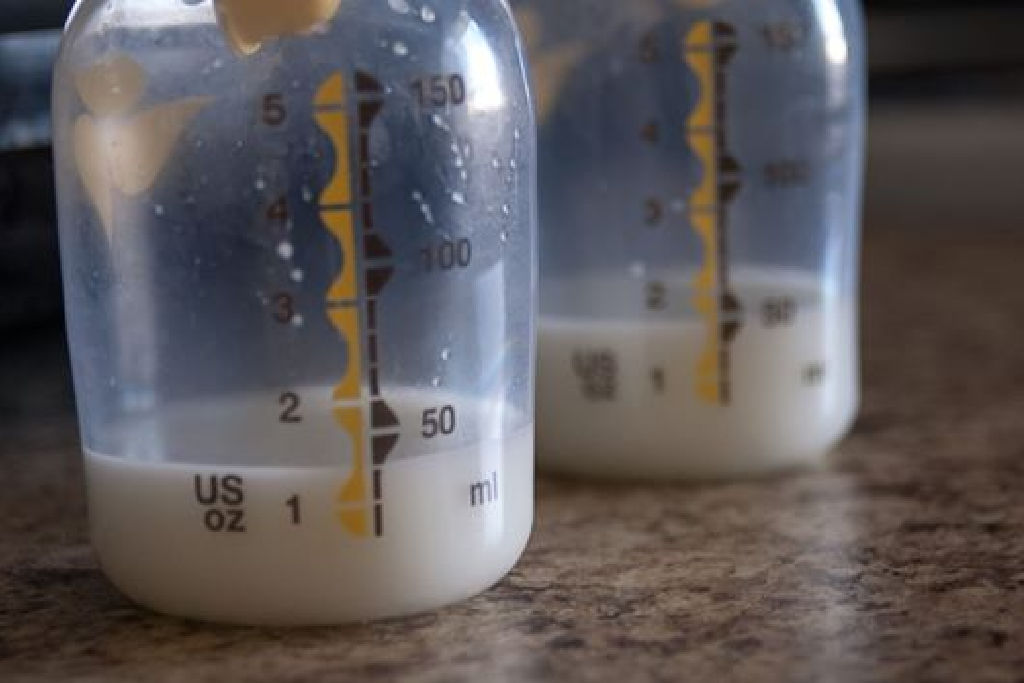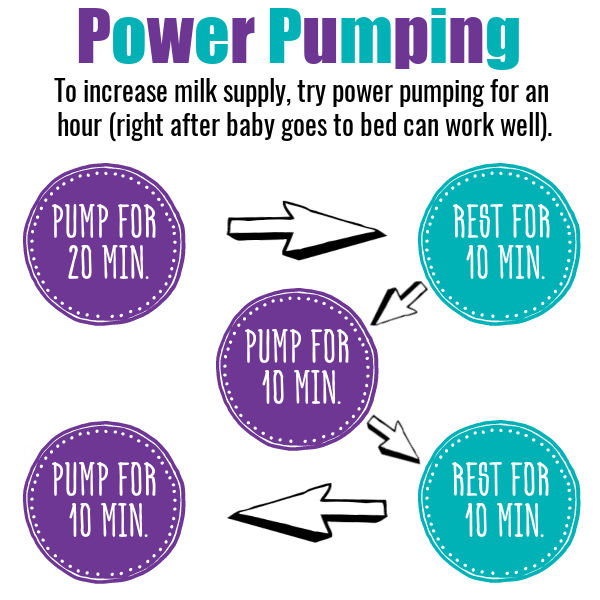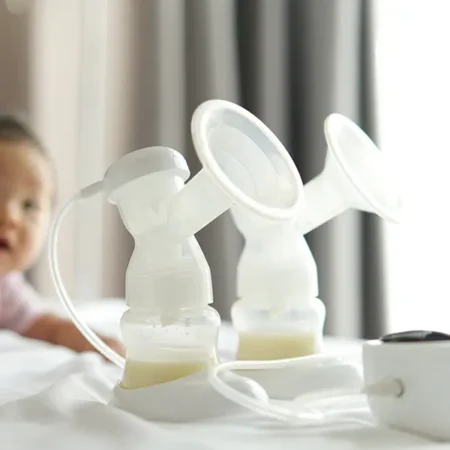Domperidone is a prescription medication that is sometimes used to increase milk supply when other methods haven’t worked. Is it effective, is it legal, and is it safe? Here is everything you need to know about domperidone and increasing milk supply.

This post may contain affiliate links, which means if you click a link and purchase something, I may make a small commission at no additional cost to you. I only recommend products I love! More information here.
What is domperidone?
Domperidone (also called motilium) is a medication that is used to treat stomach disorders and prevent nausea and vomiting. One of its side effects is that, in some lactating women, it increases the amount of breast milk they produce.
The effectiveness of domperidone was examined in a 2010 study of mothers of premature infants who had experienced “lactation failure.” In this study, the women who took domperidone saw in average breast milk volume increase of 267% compared to 18% for the group that took a placebo.
How does domperidone increase milk supply?
It’s likely that milk production is increased because domperidone increases the production of prolactin by the pituitary gland.
It does this by blocking dopamine (which decreases prolatin secretion). This results in more prolactin, and more breast milk.
How long does it take to work?
Most people that use it see increased milk supply within three to four days. Some women notice a difference much faster, within 24 hours; with others it may take several weeks.
What is the recommended dosage?
The recommended dosage is 30 mg three times per day, at about 8 hour intervals.
What are the side effects?
The side effects that have been noted are abdominal cramps, dry mouth, and headaches.
Is it safe to use?
No drug (or herb) is without risk; for this reason, most breastfeeding experts recommend trying to remedy supply issues without prescription medication or herbal galactagogues if possible.
For this reason, the methods that I usually recommend first are power pumping and oatmeal.

Additionally, if you’re prescribed domperidone, talk to your doctor to make sure there are no interactions with any other medications or supplements that you’re taking.
I heard the FDA blocked its use in the United States?
Here’s a quick summary of what happened with regard to the FDA and domperidone.
In 2004, the FDA issued a warning against domperidone because of the risk of cardiac arrhythmia or cardiac arrest:
“The agency is concerned with the potential public health risks associated with domperidone. There have been several published reports and case studies of cardiac arrhythmias, cardiac arrest, and sudden death in patients receiving an intravenous form of domperidone.”
The FDA also noted that domperidone is not approved specifically for lactation in any country and that the drug is secreted in breast milk.
However, some doctors and IBCLCs in the breastfeeding community responded in a consensus statement with the following:
“Domperidone has previously been implicated as causal in arrhythmias when given intravenously in doses higher than would ever be used orally. A warning advising against the use of domperidone by the Federal Drug Administration in the United States was published in 2004 based on the concern raised by high-dose intravenous administration of domperidone. Of note, among the patients referenced in this warning, the majority had co-morbid serious illnesses, were receiving chemotherapy, and/or were severely hypokalemic.”
So, the FDA says it’s not safe because of the risk of cardiac arrest; the breastfeeding community states that this risk is minimal given that the patients that has cardiac arrhythmias received very high doses (1,000mg intravenously) as opposed to what a breastfeeding mother would get (30mg orally). Also, the individuals who suffered from cardiac issues were already quite ill when they were given the medication.
If you are considering domperidone, I would recommend discussing this with your doctor.
How can I get domperidone?
If you do not live in the United States, it will be much easier – in many countries, like Canada, the UK, New Zealand, and Australia, your doctor can prescribe it and you can get it like any other medication.
Per Dr. Newman, who is a breastfeeding expert, the other option is ordering from an international pharmacy (here are the FDA regulations for doing this).
Need help with exclusive pumping? Use EPUMP30 for 30% off
What are the alternatives if I can’t get it?
There is another prescription medication – Metoclopramide, also known as Reglan – that works very similarly to domperidone in that its “on label” use is treating nausea and vomiting, but it also inhibits dopamine and increases milk supply.
This drug is approved by the FDA.
The downside to Reglan is that depression is a side effect. Since new mothers are susceptible to post-partum depression, taking a drug with this side effect may be contraindicated, especially if you have a family or personal history of depression.
Again, you may which to discuss this with your doctor.
Breastfeeding supplements and herbal galactagogues, like fenugreek and blessed thistle, are other options.
After my supply increases, can I just stop taking it or should I wean off of it?
You should wean off of it. A sample weaning schedule is available here.
Do you have experience with domperidone and increasing milk supply? Please share it below!
References
- Campbell-Yeo, Marsha L., et. al. “Effect of Domperidone on the Composition of Preterm Human Breast Milk.” https://publications.aap.org/pediatrics/article-abstract/125/1/e107/29733/Effect-of-Domperidone-on-the-Composition-of?redirectedFrom=fulltext
- Newman, Jack, MD. “Domperidone, Getting Started.” https://www.breastfeedinginc.ca/informations/domperidone-getting-started/
- FDA. “FDA Talk Paper: FDA Warns Against Women Using Unapproved Drug, Domperidone, to Increase Milk Production.” https://www.fda.gov/Drugs/DrugSafety/InformationbyDrugClass/ucm173886.htm
- Flanders, Daniel, et. al. “A Consensus Statement on the Use of Domperidone To Support Lactation.” https://www.breastfeedinginc.ca/wp-content/uploads/2017/02/Domperidone_Consensus_Statement_May_11_2012-1.pdf
- Baby Goo Roo. “Domperidone effective but unavailable in the U.S.” https://babygooroo.com/articles/domperidone-effective-but-unavailable-in-the-us
- Newman, Jack, MD. “Domperidone General Information.” https://www.asklenore.info/breastfeeding/induced_lactation/domperidone_general.shtml















